1⁄35U.S.S. FUBAR
For maintaining communications during the USMC invasion of Peleliu, the advance command post (CP) relied largely on a curious experimental LVT(A) especially equipped to serve as a mobile radio station (facetiously dubbed "USS Fubar"). The vehicle performed valuable service, but developed too many weaknesses to be considered wholly successful. Establishment of the initial wire network presented almost insurmountable difficulties owing to heavy fire, lack of natural growth for raising it above ground, and the congestion of the beachhead area, which caused the wires to be chewed up by vehicles passing over them.
This specific LVT (A)4 was only seen at Peleliu according to the USMC Monograph “The Seizure of Peleliu,” by Major Frank Hough, USMC (Chapter III “D-Day on Peleliu”).
References:
Excellent LVT (A)4 references include:
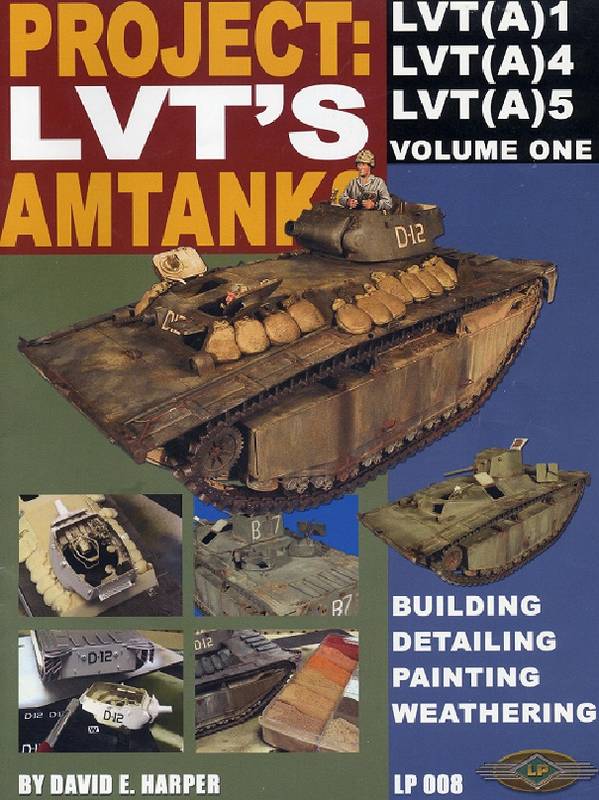
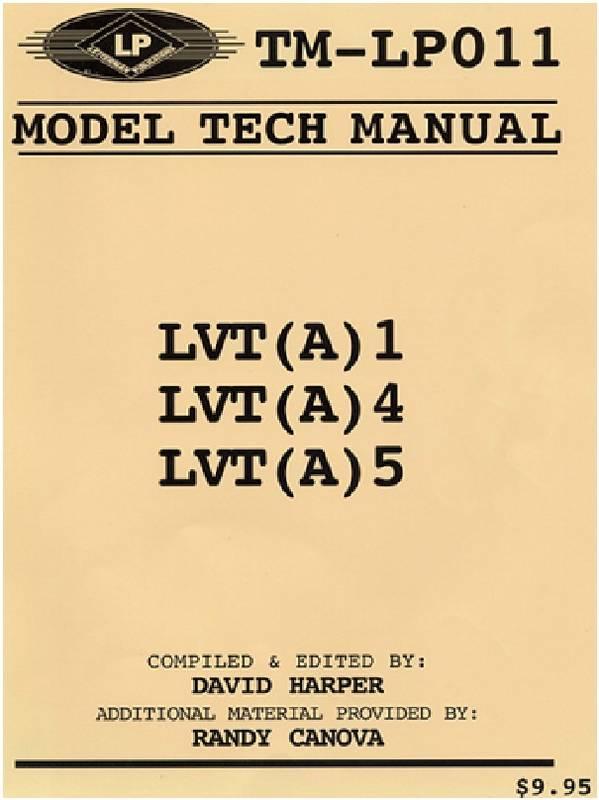
An excellent website for videos is Critical Past, with the specific video #65675071785
From these resources I have identified specific changes to the normal LVT (A)4 configuration:
Photo from the project book noted above Page 47;
1. Side additional armor welded on not hung.
2. Two bilge pump discharges instead of one.
3. 4 Whip antennas, basic antenna pots welded, two on left side with original pot towards right front. On left front pot is a whip, one towards rear unknown. One whip on left top turret, top right antenna unknown.
4. Unknown box on turret left side.
5. Both hatches open.
6. No bow MG on front. Single driver front hatch, possible window or slide cover on it.
7. Armored engine hatch
From Hard Corps Models:
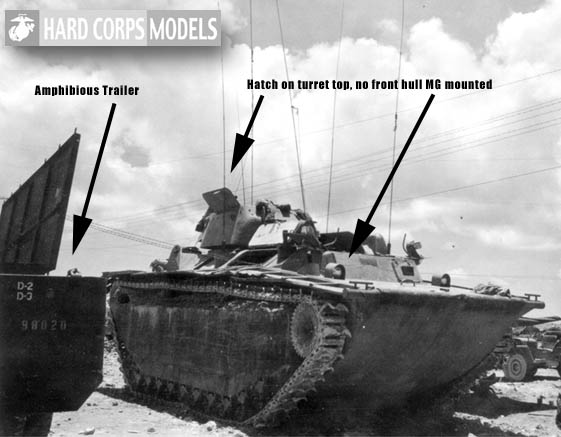
8. Additional front armor plate welded not hung.
9. Drivers front hatch small slide opening.
10. Hatches on top of turret and not open top, no MG ring, and the top turret should be covered completely, smaller size hatch, set to one side of top, 2nd hatch on other side top is unknown.
11. 2 more antenna pots mounted, front short antenna, rear whip antenna. Total of 7 antennas.
12. Item behind turret, seems to indicate that the wire basket is in place to hold stowage.
Photo from the project book noted above Page 47:
13. Hatch on deck in front of turret, large size hatch opening towards front of LVT.
From "Critical Past" film 65675071785:
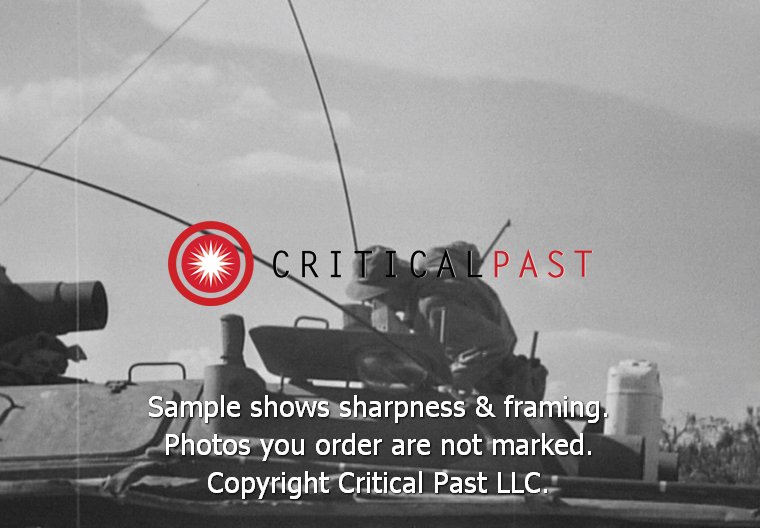
14. Plastic bubble covers over periscope covers on front hatches, front right antenna pot looks like just an antenna base.
15. Hatch handle for the hatch located in front of turret can be seen.
From "Critical Past":
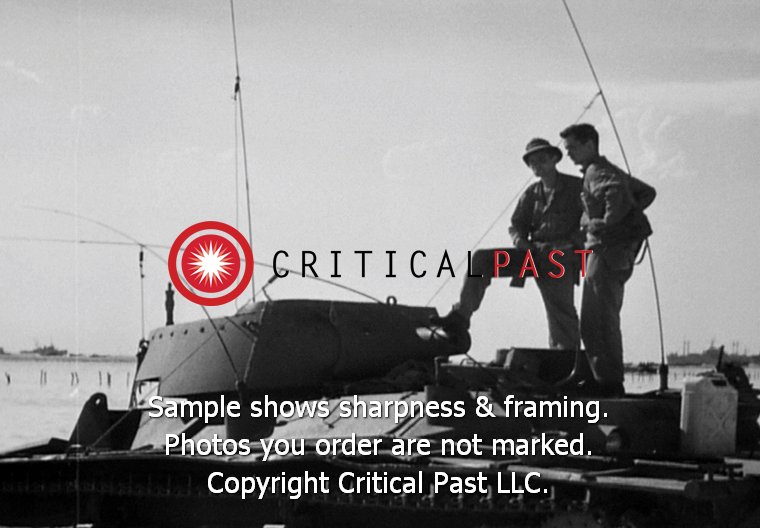
16. Antenna wire holders/clasps
17. Antenna lengths and types, all antennas are the screw together type in 3 foot sections, looks like 3 screwed together, with connectors for tie downs.
A very specific and short lived modification to this LVT (A)4 named U.S.S. FUBAR.












